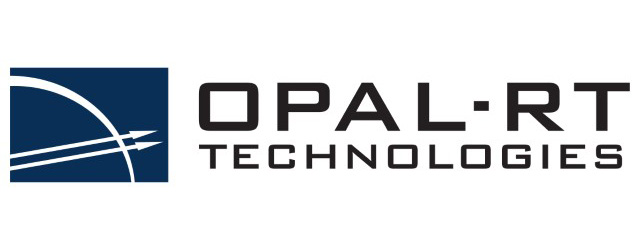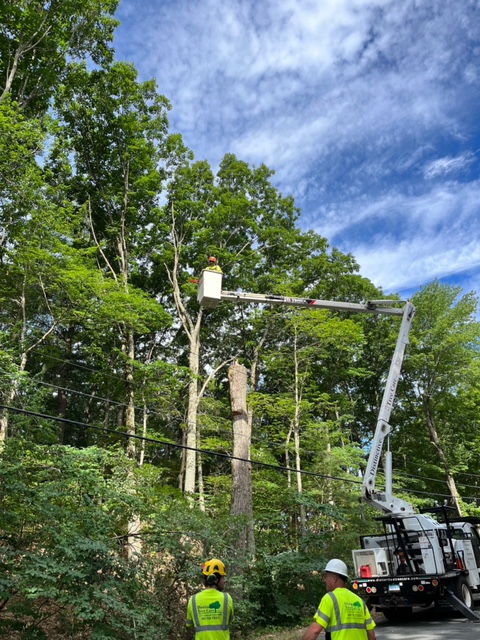Canada’s Leading Real-time Simulation Expert Gets ‘Real’ About Time

OPAL-RT TECHNOLOGIES Shares Two Decades of Timekeeping Benefits Using TimeControl
OPAL-RT TECHNOLOGIES was founded in 1997 on a clear vision: To put cutting-edge real-time simulators on every engineer’s or researcher’s desk so anything they imagine, can be quickly prototyped, tested and built.
 The result? A 25-year legacy of empowering customers to stay on schedule and budget for complex mechanical and electrical system designs that span automotive, aerospace, power electronics and power systems sectors. Today, the Montreal-based company’s leading hardware and software systems are at the forefront of the industry. Their solutions push the boundaries of Software-in-the-Loop and Hardware-in-the-Loop simulations and rapid control prototyping to help clients develop next-generation aircraft, power grids and self-driving vehicles.
The result? A 25-year legacy of empowering customers to stay on schedule and budget for complex mechanical and electrical system designs that span automotive, aerospace, power electronics and power systems sectors. Today, the Montreal-based company’s leading hardware and software systems are at the forefront of the industry. Their solutions push the boundaries of Software-in-the-Loop and Hardware-in-the-Loop simulations and rapid control prototyping to help clients develop next-generation aircraft, power grids and self-driving vehicles.
Supporting OPAL-RT’s growth is HMS Software’s multi-function timekeeping system TimeControl®, which has played a key role throughout the company’ innovation journey.
First implemented in 2002, TimeControl is now used by nearly 300 OPAL-RT employees, the majority based in Montreal and the rest working from subsidiaries in India, USA, China and Germany.
“As a research and development company, it’s vital that we have a reliable system to track and organize our team’s time,” said Irene Peres, OPAL-RT Director, Metrics and Quality Department. “The better the level of detail in our time data, the better our business runs.”
Significant benefits for tax credit reports
Timesheets are completed weekly, allowing the company to track employee tasks at a detailed project level while identifying those tasks that are eligible for Scientific Research and Experimental Development (SR&ED) tax credits — a key benefit that enables the company to recoup a signification portion of its R&D investment in Canada.
“To be eligible, it’s important to know who did the work, what work they performed, as well as the supervisor who approved the work, and the way TimeControl is structured, we can easily see all of that,” said OPAL-RT Financial Controller Mélanie Vaillancourt, explaining that government tax credits are available for R&D salaries and wages, as well as private partnership pre-competitive research projects.
“The tax credit workflow runs so smoothly,” she added. “It was one of the main reasons OPAL-RT decided to stay with TimeControl when it made the decision to deploy Microsoft Dynamics NAV enterprise software in 2018.” OPAL-RT was then able to use the TimeControl API to configure the integration of data to and from Dynamic NAV.
“TimeControl answers our business needs at the front end, and provides the connectivity we need at the back end to talk to our other mission-critical systems,” said Vaillancourt, noting the only change they did make was to move to the cloud, migrating to a TimeControl Online software-as-a service subscription. “It was a big win for us to be able to keep our timekeeping processes the same in a Cloud system as it had been in our on-premise system in the past,” she said.
Time data invaluable for operations
At OPAL-RT, TimeControl functions seamlessly as part of an “ecosystem of tools” to support business operations, including Microsoft NAV, Microsoft Project and Jira Software, a tool that supports agile project management methods. Not only does TimeControl enable users to manage their hours for payroll – including tracking vacation, sick and banked time so they aren’t constantly checking with Human Resources – but it also provides a crucial project support function, allowing users to track their hours on a task-by-task basis so project managers can tell at a glance whether or not activities are on time and budget.
“TimeControl really gives us a great deal of visibility into what’s going on within our company at all times,” said Irene Peres. “It’s a huge source of valuable information for us.”
Overall, timesheets are designed to be very thorough, but the level of detail will vary depending on a user’s role within the organization. Thanks to TimeControl’s filters, users only see the projects and tasks that relate to them, and most overseas users use the product to track project work so they can easily manage meeting premium customer support account needs.
“The level of detail is personalized and very transparent for the user” said Irene. “They won’t know that others have more or less complexity in their timesheets.”
“One of the other nice-to-have features,” she added, “is the ability to assign temporary privileges to a co-worker to help cover absences from work.”
“When you go on vacation, it’s very straightforward,” she explained. “You simply go into TimeControl and note that from this date to this date, this person is replacing me, and it works perfectly. In the background TimeControl is keeping track of who actually made the changes.”
Excellent continuous improvement tool
More recently, OPAL-RT has started to use timekeeping data to support continuous process improvement. The reporting capability within TimeControl, as well as the ability to integrate with other data in Jira, Microsoft Project or NAV, provides a firsthand look at where engineers and developers are spending their time. When variances from the plan are identified, project managers see it immediately and can step in to make necessary changes.
As Peres explained, projects are organized in a way that makes it easy to compare different types of work through analysis, by using common work identification across all systems. “You can only measure what you are prepared to measure,” she said, noting that time data from TimeControl is now part of the company’s overall performance metrics and key performance indicators (KPIs).
“The more we derive key decision-making information from our timekeeping system, the more managers come to us with new queries,” added Vaillancourt. “It’s common for a manager to come to us and ask, ‘How can I improve the efficiency of my team?’ or ‘Can you measure how many projects we did in this area?’ They like to know where their resources are going and we can help provide the answer.”
That’s where the ability to apply validation rules within TimeControl is critical. OPAL-RT worked with HMS Software consultants to help write rules to improve the quality of timekeeping data being entered. If an employee attempts to enter information outside of the scope of a rule, they’ll be alerted. The result is catching possible errors automatically as they’re entered, rather than finding out much later. Administrators and managers trust the already-validated timesheet data.
System’s effectiveness is all in the details
HMS Software President and Founder, Chris Vandersluis, said he’s impressed by the different ways in which OPAL-RT is analysing their time. “Entering time data is simple; it’s once the data is in an integrated, enterprise system that the conversation becomes much more involved,” he explained. “Asking, ‘What was time spent on?’ instead of just ‘How much time was spent?’ can be a game-changer’ OPAL-RT is using its TimeControl data to improve their processes and that’s incredibly valuable.”
“After two decades of continuous use,” Peres said “TimeControl has become an integral part of OPAL-RT’s enterprise system. It’s hard to imagine working without it. It’s the only timekeeping system I can recall ever using here,” she said, adding that whenever new employees join her team, one of the first things they remark on is how much more detail is captured by their timesheet compared to their prior employer.
“For us, it’s not just about good time management. It’s about having a strong communication tool that we rely on to keep us on course in a complex, fast-paced industry,” said Peres.
You can download this TimeControl Case Study at: opalrt_case_study.pdf
For more information about TimeControl, please contact: www.timecontrol.com/contact or info@hms.ca.
For more information about OPAL-RT, please see www.opal-rt.com.